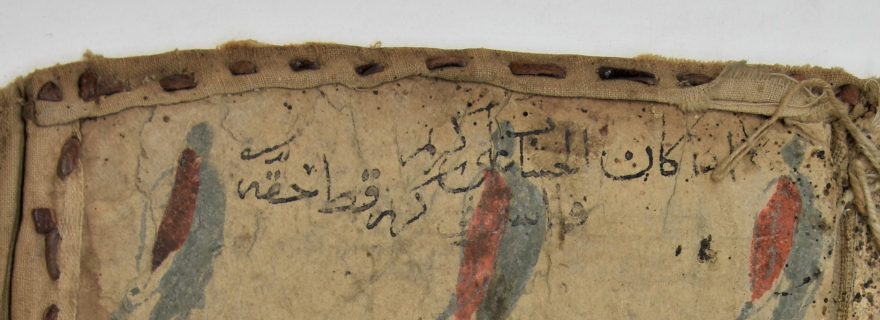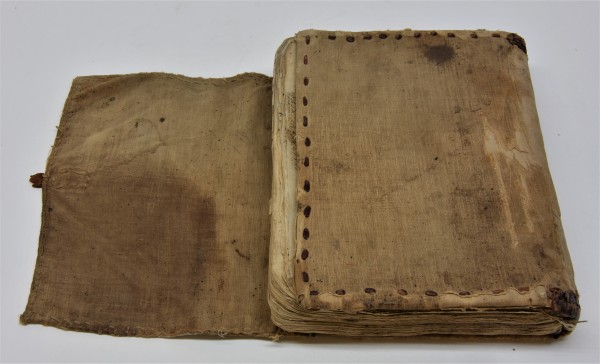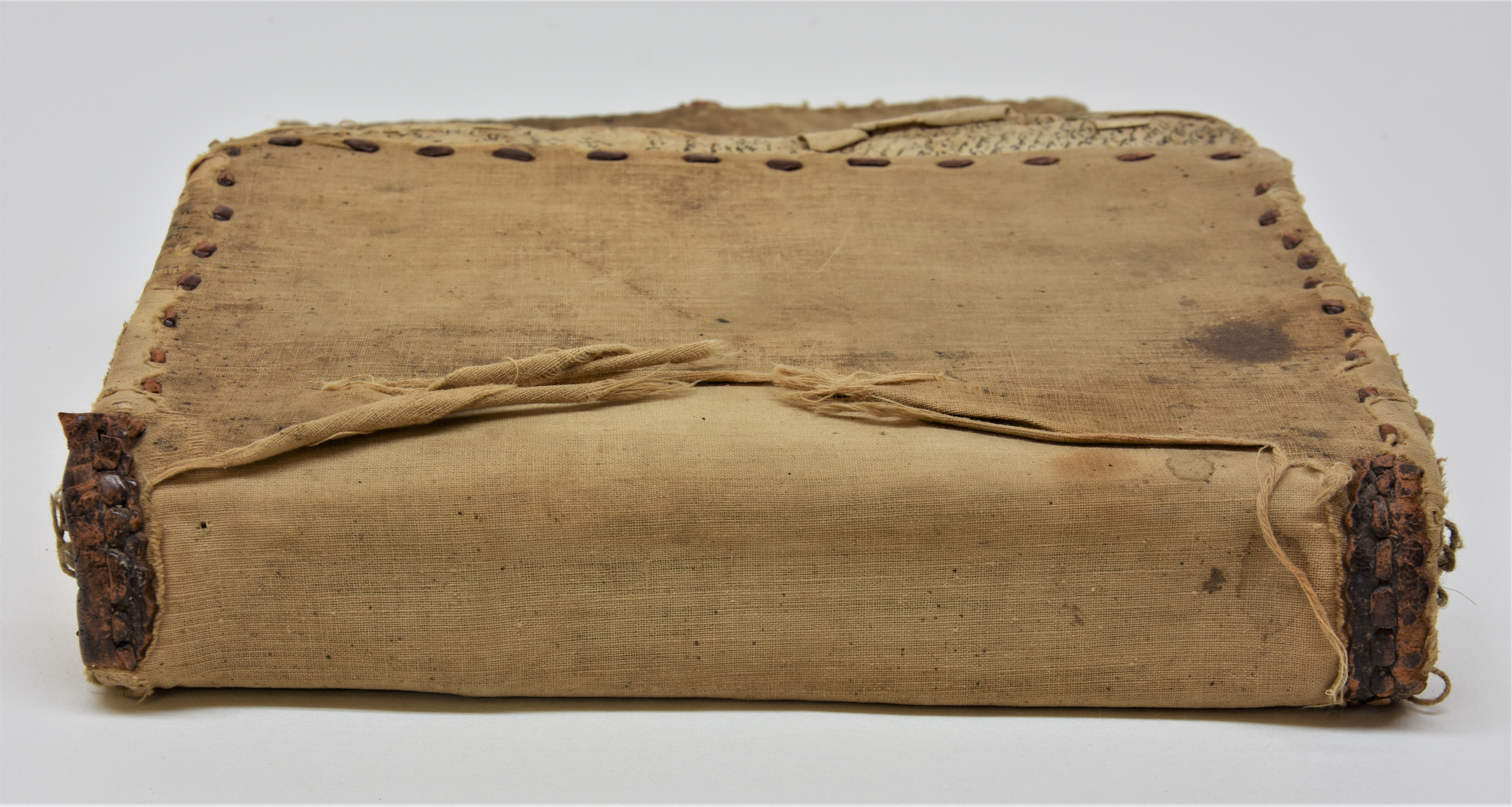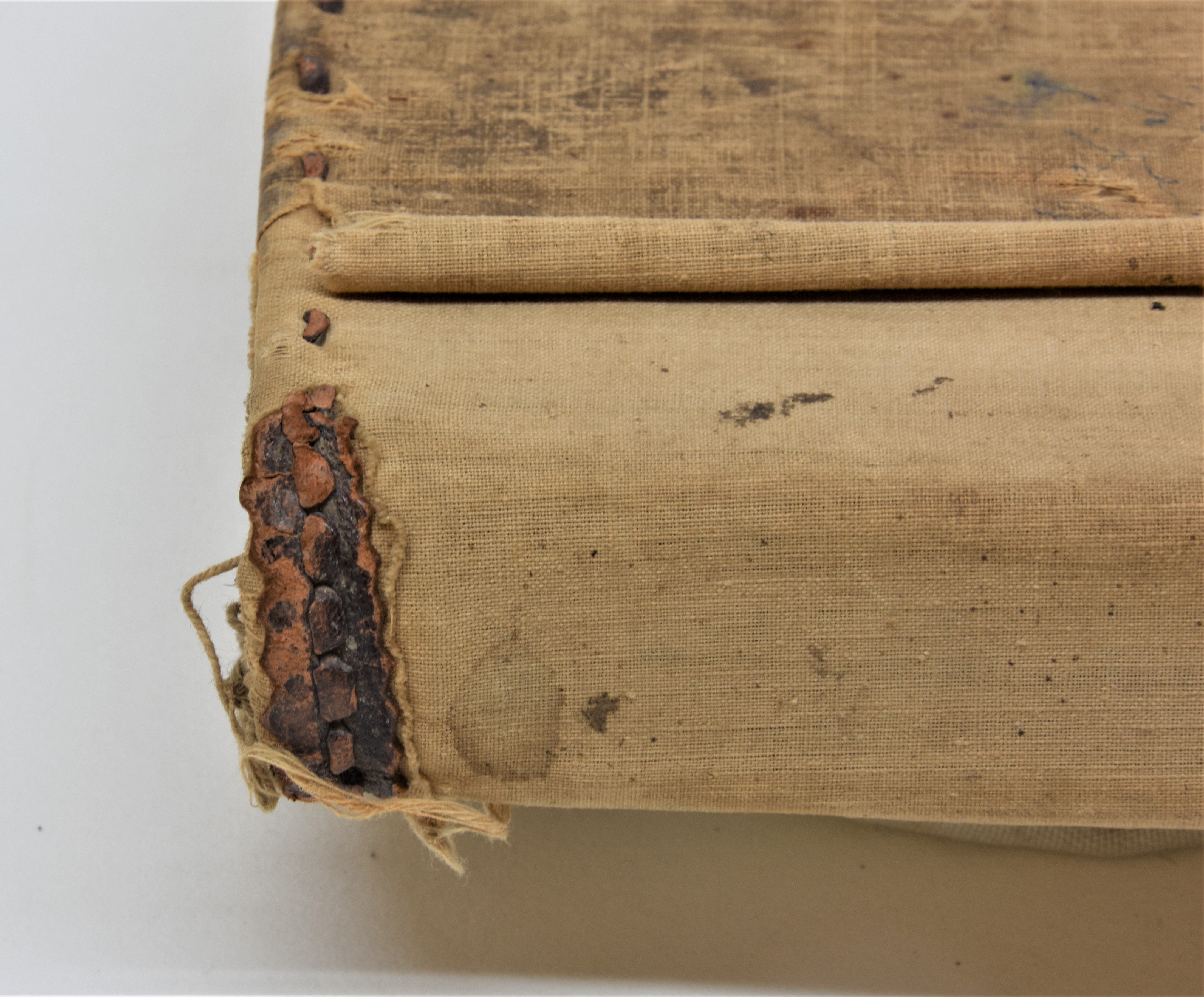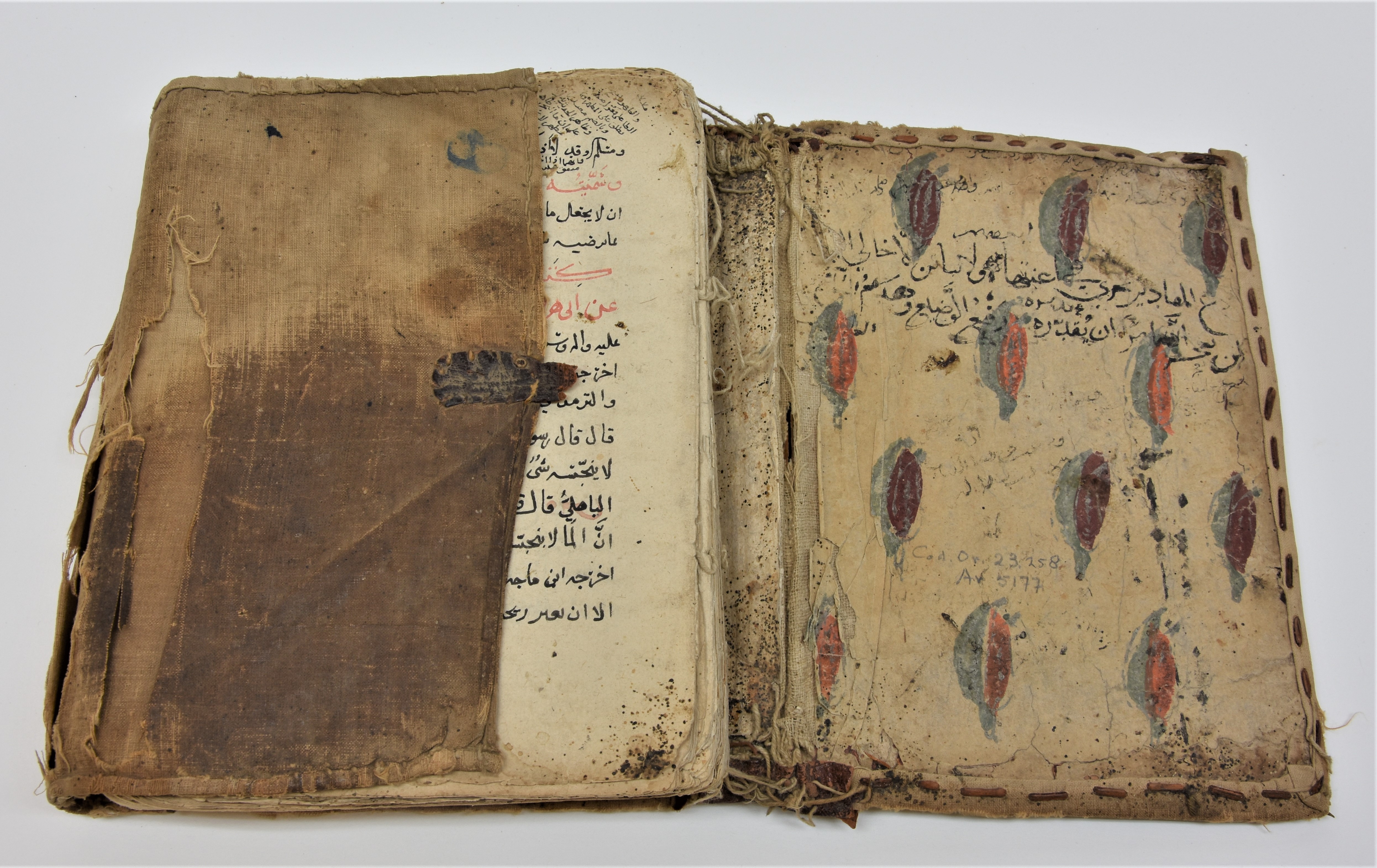A silk binding from Yemen
It’s very rare to come across a binding that seems to be unrelated to any type of binding we know. But it does happen. A cloth binding on a Yemeni manuscript is a case in point.
Leiden University Libraries participates in the international Zaydi Manuscript Tradition project to digitize and make available its circa 150 Yemeni manuscripts (see also: https://leidenspecialcollectionsblog.nl/articles/digitisation-project-of-yemeni-manuscripts-at-leiden-university-libraries). This is an excellent opportunity to examine the condition and physical characteristics of all these manuscripts from Yemen. It came as no surprise that quite a few of them needed conservation treatment: cleaning, unfolding of damaged edges, repairing tears and split board attachments – these are the common needs of manuscripts that were used and cherished by their former owners. What came as a surprise, though, was the appearance of a collective volume, Or. 23.258, with Hadith texts, one of them dated 1774 CE. The volume is bound in a textile cover with leather laces around all edges. The binding has a flap, as many bindings from the Islamic world do, but this one is not actually envelope-shaped. In fact, this cover has many features that seem unique and not related to traditional bookbinding practice. Where did the idea for this binding originate?
Collections Leiden University Libraries (Or. 23.258), the manuscript after conservation.
It is difficult to say what the most striking feature is. The cover consists of several layers of silk and its maker was very resourceful. The various parts of the silk are stitched together in such a manner that there are no fraying threads anywhere, except for the current mechanical damage on the spine. The boards are semi-flexible; a few layers of wastepaper were used, but not in-between the silk layers. All around the edges of the boards – excepting the fore-edge flap and closing flap – a leather lace is stitched through these materials. This appears to function as a strengthener and a decorative element. In addition, we find strips of leather underneath this leather lace at the head and tail of the spine. Could these be remnants of a full leather spine? Close inspection, however, refutes that idea: these strips of leather have carefully cut pointy edges. This suggests that these additional strips were not only decorative but also functional, giving the binding support and protection at the outer ends of the spine. They also functioned as anchorage for the endbands, and thus are part of the structure and the textblock-binding attachment.
On the interior of the binding, we find an interesting decorative paper. It is not marbled but blockprinted, and as the edges of these paper doublures are overlapped by the silk cover turn-ins, it is clear they are part of the original binding materials. Such papers are very specific, and the finding of a similar paper in a dated or locatable book may provide more information about the provenance.
The flap is another curiosity. Usually, with bindings from the Islamic world, the envelope flap closes below the front (right) board, and not over it. However, the flap of our silk binding has a leather lace attached in the middle of its outer edge, which indicates that the flap was folded over the front cover. The leather lace was then wrapped around the item, to close it neatly. It must be said that in Yemen this divergent way of using the flap is slightly more common; we have a few bindings with leather straps attached to their envelope flaps, but these are all traditional full-leather bindings. Whether this cloth binding is in some way related remains a mystery. We certainly hope that this Blog post generates a broad interest that may help identify comparable binding types, which could provide further clues as to the origin of this specific binding.
Collections Leiden University Libraries (Or. 23.258), the manuscript prior to conservation.
The Yemeni manuscripts in the UBL oriental collections will be available online later this year. The damaged covering material of Or. 23.258 was consolidated and the conservation report of that treatment goes under the number 2019-11. More information on the digitization project can be found at https://ymdi.uoregon.edu/ and https://www.ias.edu/idea/2017/schmidtke-zaydi-manuscript-tradition.


